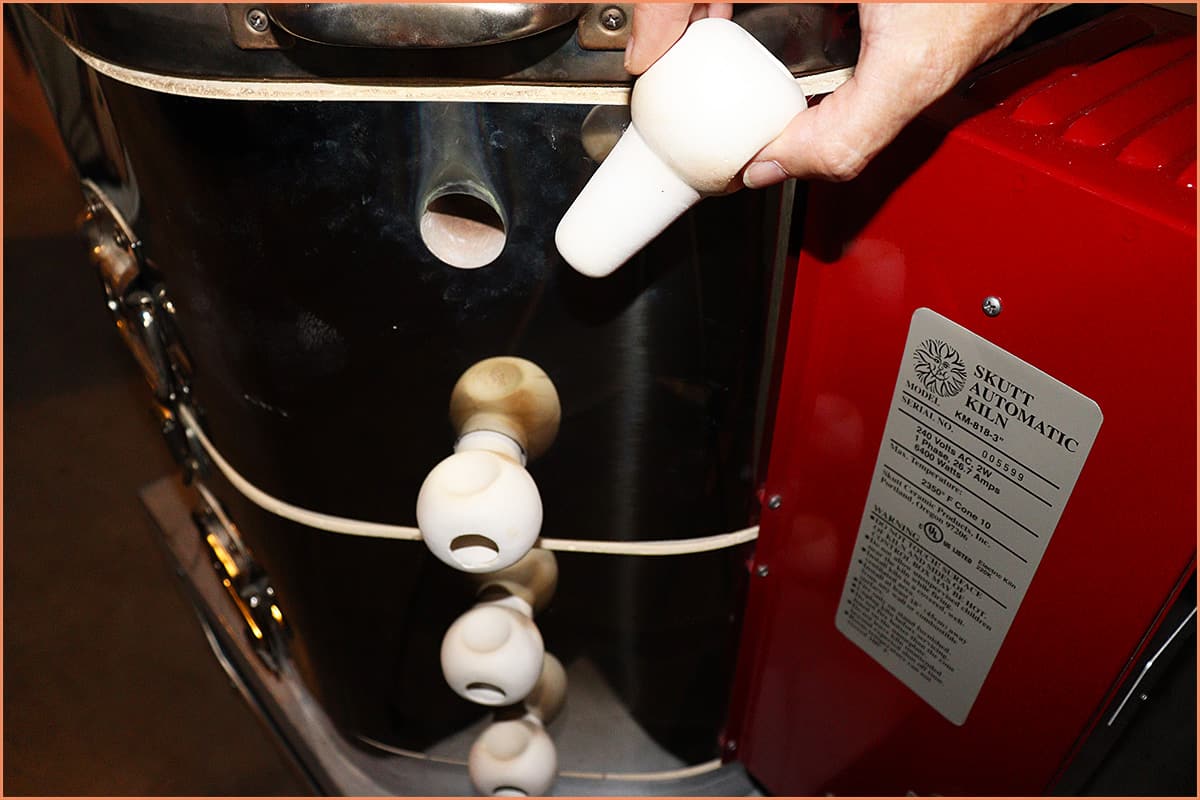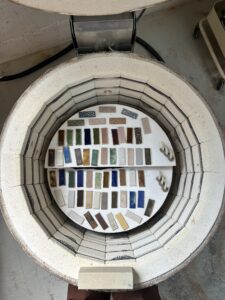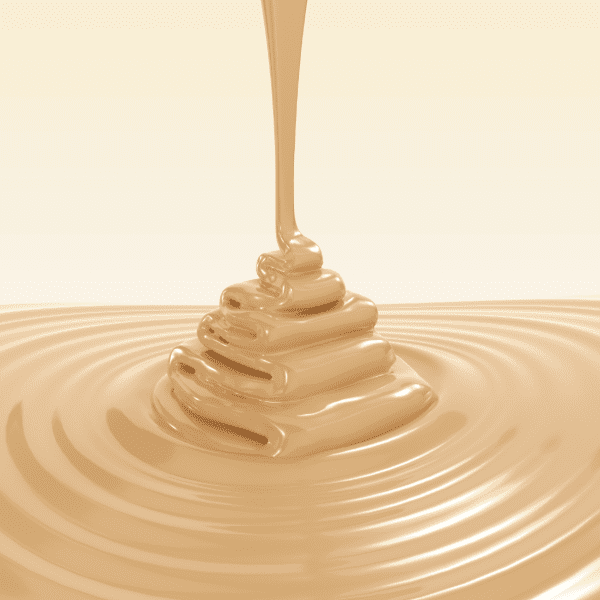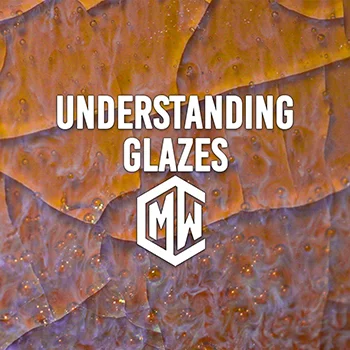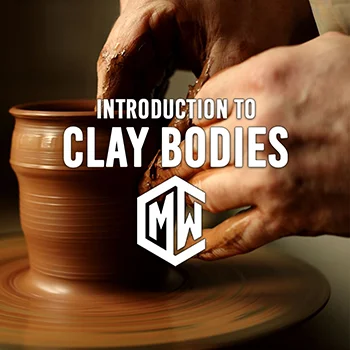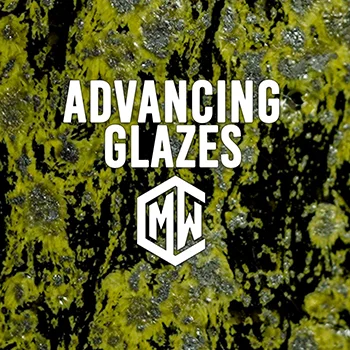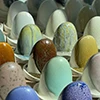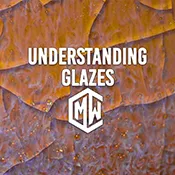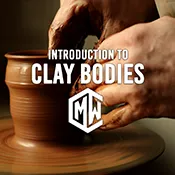Kiln peepholes – those mysterious little portals into the fiery depths of your kiln – are more than just a way to sneak a peek at your pottery’s progress. They’re crucial for controlling the kiln’s atmosphere and ensuring your masterpieces emerge in tip-top shape. But when should you use them, and how do you avoid turning your kiln into a ceramic popcorn popper? Let’s shed some light on these fiery peepers!
I want to know everything about Kilns! Read more about Kilns in CMW’s blog here!
What Do You Do With Kiln Peeps?
Think of kiln peepholes as the air vents of your kiln. They allow you to:
- Vent Gases: During the initial stages of firing, organic materials in the clay burn off, releasing gases. Peepholes help these gases escape, preventing explosions (yikes!) and ensuring even heating.
- Control the Atmosphere: By adjusting the peepholes, you can influence the amount of oxygen in the kiln, which can affect the final look of your glazes.
- Monitor the Firing: While modern kilns have fancy digital controllers, peepholes allow you to visually check on your cones and get a feel for the kiln’s progress.
Should You Have Them Open Ever?
The short answer is: it depends! Here’s a general guideline:
- Bisque Firing: It’s generally recommended to keep peepholes open during the early stages of a bisque firing to allow gases to escape.
- Glaze Firing: Peephole usage during glaze firing varies depending on the specific glaze and desired effects. Some potters keep them open for part of the firing to create unique atmospheric effects.
- Cooling: Peepholes can be strategically opened during cooling to control the rate at which the kiln cools down, which can help prevent cracking.
My kiln is acting funny…Should I call maintenance? Check out CMW’s blog Ceramic Kiln Maintenance and Testing: Why Is It Important?
(This image is from pottery crafter and can be viewed here)
Firing Conditions and Peephole Usage
In a standard oxidation firing, where ample oxygen is present within the kiln chamber, the peepholes can generally remain closed or perhaps slightly ajar, especially during the later stages of the firing cycle. This helps to retain heat efficiently while still allowing for some observation.
Understanding how to utilize your kiln’s peepholes is crucial for successful firings.
However, for reduction firings, the approach is significantly different. To achieve the desired oxygen-starved atmosphere that characterizes reduction, the peepholes are typically kept tightly closed throughout the firing process. This is essential to prevent the introduction of unwanted oxygen, which would counteract the reducing conditions necessary for the specific chemical reactions and visual effects sought in this type of firing.
Observing the kiln during reduction often involves momentarily removing a plug, taking a quick look, and then immediately resealing the peephole to minimize atmospheric disruption.
Side Quest: Deciphering Kiln Firing Rates for Best Results: Ceramic Cone Chart
Peephole Pointers
- Consult Your Kiln Manual: Your kiln’s manual will have specific recommendations for peephole usage.
- Start Conservatively: If you’re unsure, it’s better to lean on the side of caution and keep the peepholes closed or partially open.
- Experiment Carefully: If you’re feeling adventurous, experiment with different peephole configurations to see how they affect your glazes. But always proceed with caution and make notes of your observations!
Kiln Peep FAQs
- “Can I look directly into a peephole?” It’s best to avoid staring directly into the peephole, especially during high temperatures. The bright light can be harmful to your eyes. Use kiln glasses for protection.
- “My kiln doesn’t have peepholes. What do I do?” Some kilns have other venting mechanisms. Consult your kiln manual for instructions.
- “I opened the peephole and saw flames! Is that normal?” Flames are generally normal during the early stages of a gas kiln firing. However, if you see flames during an electric firing, contact a qualified technician.
Remember: Kiln peepholes are powerful tools. Use them wisely, and you’ll be well on your way to creating stunning ceramic creations!
I want to know everything about Kilns! Read more about Kilns in CMW’s blog here!
Hungry for more?
New kilns bring lots of excitement to the studio, but also a few questions. Should I calibrate my thermocouple? And, Do I need to adjust my firing rate to my new elements? In CMW’s podcast, For Flux Sake the gang talk about new kilns, ASTM standards for ware, and the difference between K23 and K26 soft bricks. They also start the show discussing testing methods for glaze durability.
Ready to dive deeper?
Loved learning about ceramic glazes? Want to go even deeper? Check out our Workshops & Courses, now available in Spanish, or YouTube Channel where Matt breaks it all down, myth-busting and Stull chart included!


